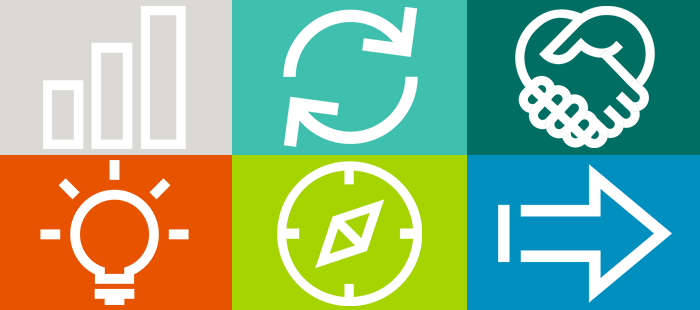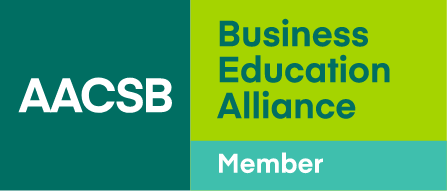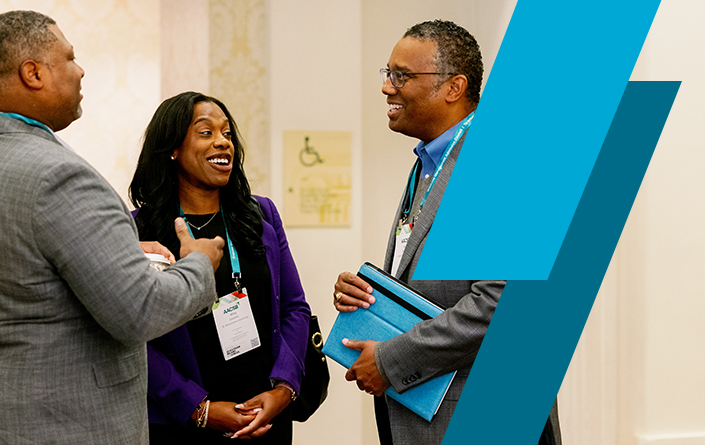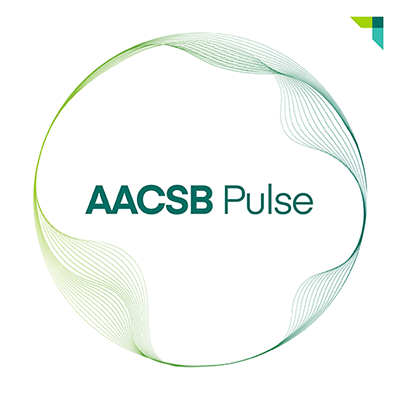A Coherent Strategy for Schoolwide ESG Integration
- Faculty at Emlyon Business School have created SDG Inside—a framework for integrating competencies related to environmental, social, and governance issues—into all course content.
- The initiative begins with a course-level audit, followed by faculty conversation and collaboration focused on strengthening the coherence and depth of relevant instruction.
- SDG Inside is evolving beyond the curriculum to shape institutional governance, research, operations, and student activities, making ESG integral to each part of the school’s mission.
We have seen a powerful shift to a more socially responsible model of capitalism. This brand of capitalism, one that serves all stakeholders rather than only shareholders, has impacted not just global business, but also business education.
This transition from a purely shareholder focus to a broader stakeholder focus is reflected in AACSB’s business accreditation standards, which according to the association, aim to “elevate societal impact as an important component of a quality business school.” Business schools have an explicit responsibility to train tomorrow’s leaders how to make critical decisions that incorporate environmental, social, and governance (ESG) issues.
Many fields apply sustainability principles across multiple business functions. However, business schools often still confine sustainability to standalone courses, and faculty still battle internally about how to embed sustainability concretely in existing courses and curricula. Several barriers prevent the integration of socially and environmentally responsible business practices into core curricula. These range from resource constraints to rigid institutional cultures to the lack of relevant expertise.
However, in our experience, one of the biggest challenges is that schools have not yet found effective ways to encourage faculty to add ESG principles to their classes. All too often, some faculty members are unaware of current business needs related to ESG in their fields. Additionally, program directors might believe that all ESG topics can be addressed in specialized courses. Consequently, students receive a patchy ESG education with gaps and overlaps across a program.
At Emlyon Business School in France, we have developed SDG Inside, a methodology that draws heavily from the United Nations Sustainable Development Goals. SDG Inside incorporates resources and incentives based on identified ESG competencies and enables us to provide a coherent ESG education across our courses and programs. Below, we share our experience implementing the methodology and the potential that we see for future improvements.
Creating the Methodology
We first formed a group of motivated faculty members from all disciplines. Together, we identified the ESG-related competencies that we already covered in our teaching. We then conducted a literature review and benchmarked our program against content from top business schools.
Next, we formalized SDG Inside, an audit tool for reviewing courses and programs, based on a catalogue of 34 ESG competencies. We integrated into this tool the depth of learning we wanted to achieve, the topics and pedagogical means we wanted to include, and the number of learning hours we wanted to dedicate to teaching ESG concepts.
Using Bloom’s taxonomy as a model, we created four skill levels for each competency. At Level 1 (Fundamental), students begin to recall, understand, and apply knowledge. At Level 2 (Analytical), they learn to analyze information, and at Level 3 (Strategic), they learn to evaluate it. Finally, at Level 4 (Innovative), they become creators.
SDG Inside integrates the depth of learning we want to achieve, the topics and pedagogical means we want to include, and the number of learning hours we want to dedicate to teaching ESG concepts.
We chose our MBA as the first program to audit based on the SDG Inside methodology because its characteristics made it one of the most straightforward to review. It is a coherent one-year program for one cohort of students, and its mandatory core courses are taught by a small number of faculty. (By comparison, our master’s program has more than 240 electives and involves all of our faculty.)
The review integrated all relevant stakeholders, including heads of program, concerned faculty, and participants. Together, we audited the program’s coverage of ESG competencies and explored creative ways to reinforce these skills.
Step 1: Hold Structured Program Discussions
To kick off our audit of the MBA program, we informed professors that 30 percent of their teaching hours should be dedicated to ESG. How was this goal calculated? Well, to be honest, it wasn’t. We simply picked a percentage that looked large enough that we knew the subject could not be ignored.
Using SDG Inside, professors identified the ESG competencies they were teaching, as well as the pedagogical approaches they used and the hours of class time they dedicated to each topic. Following the audit, we led a series of three workshops to showcase how the program was doing when it came to teaching ESG, highlighting strengths and learning gaps.
Then, we brainstormed how we might improve the program content. In these conversations, we challenged each other about the depth of learning in each subject.
“Wow,” we hear you saying! “All the professors agreed to do that?” Actually, yes. Luckily, we have like-minded professors in the MBA program, whose mindsets range from “delighted to be involved” to “just tell me what to do.” Of course, we had a few professors who were less interested—and even one who suggested we set up a separate elective in his discipline so that he did not need to change his course. But overall, the process went well.
But the goal of the process was not to complete the audit itself. The goal was not even to count the hours of class time dedicated to ESG, although that metric is useful for the school’s Financial Times ranking and AACSB accreditation. The goal was to improve the quality of our conversations about ESG and how we teach it.
We wanted our professors to think through how we can better embed ESG in our courses. We wanted them to ask each other questions about best practices, knowing that some questions had no right answers. We wanted our faculty to wrestle with the topic and learn together.
As part of this process, professors are encouraged to leverage SDG topics in the cases and examples they integrated into their teaching. For instance, if students are learning about capital investment, why not ask them to calculate a hotel’s return on its investment in solar panels, addressing SDG 7?
Step 2: Coordinate ESG Adoption Across the Program
During our faculty discussions, we realized that the process of developing ESG competencies in our students was a two-part innovation challenge. First, we needed to incorporate ESG into the curricula in ways that warmed up our students to these topics over the course of the program.
Second, we had to coordinate our efforts to avoid unnecessary repetition. Otherwise, if different professors conveyed the same information too often, students might become quickly disillusioned and uninterested—or worse, annoyed and resistant (“I can’t hear it anymore!”).
We wanted our professors to think through how we can better embed ESG in our courses and ask each other questions about best practices, knowing that some questions had no right answers.
With these two goals in mind, we worked on raising awareness and sensitizing students to the topics (Level 1 in Bloom’s taxonomy of learning) before the program even started. For this, students from the previous cohort organized a CSR-related induction event, where they shared their experiences and perspectives on the topic, and invited speakers to present on issues related to CSR and sustainability. Then, over the first semester, we focused on increasing students’ ESG competencies to Levels 2 and 3.
Throughout the rest of the program, we ramped students up to Level 4 by engaging them in ambitious real-world projects that challenged them to wrestle with the trade-offs and complexities that ESG issues present. These projects put students in managers’ shoes, giving them valuable practice for real-world decision-making.
For one project, students developed a fundraising strategy for a nongovernmental organization that delivered medical aid to war zones. For another, students helped a startup focused on repairing and recycling e-bicycle batteries create a more sustainable business model.
After the evaluation process, we summed up the ESG competencies that our faculty taught in the different courses of the MBA program, using the visual representation below:
SDG Inside—Our Program Wheel
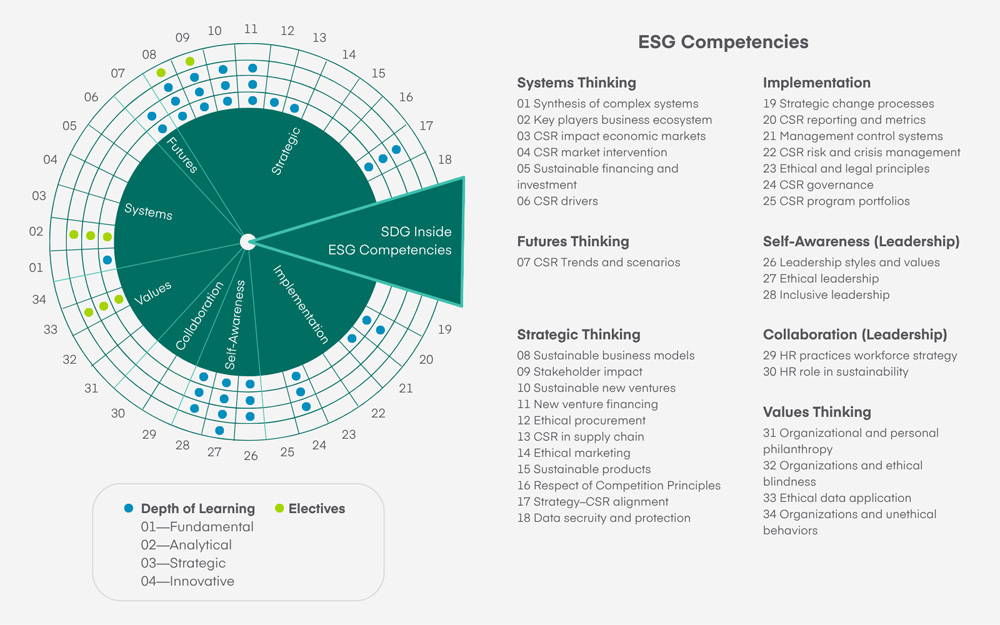
This visual offered three benefits. First, heads of program could use it to monitor their programs and more easily identify gaps in teaching and areas in need of improvement. Second, faculty could refer to it to see clearly whether ESG competencies were being addressed coherently across the program and how to work together to strengthen the “bridges” between different courses. Finally, our students could use it to clearly see which ESG competencies our programs addressed, which meant that they could accentuate those skills more confidently in their job recruitment interviews.
This visual is updated manually and regularly shared with faculty, either during program meetings or during general faculty meetings that occur one to two times year.
Step 3: Embed ESG Into Our School’s DNA
The review of our MBA was our first SDG Inside experience. We subsequently rolled out the approach to other offerings, including our executive education programs for middle managers and many master’s programs. We are grateful to the academic program directors who enthusiastically took up the challenge.
Other offerings have yet to go through the SDG Inside process, primarily because of succession issues in the program team. However, we hope to apply the process to these programs in the near future.
SDG Inside has been widely shared with faculty in each discipline, and we have conducted all-faculty workshops with organizations such as the SHIFT Project, a French think tank advocating the shift to a post-carbon economy. In addition, we include SDG Inside competencies within every syllabus.
All faculty members are asked to think through the process of integrating ESG topics into our curriculum. Our framework is inevitably imperfect, but their input helps our framework evolve. They help us identify competencies in corporate social responsibility (CSR) that are most in demand, as the needs of business change over time.
As a Société à Mission institution, Emlyon must align all of its governance structures and institutional decisions with considerations of sustainability.
Another factor has affected the implementation of our SDG Inside framework: Our school’s Société à Mission status, a French designation that requires an institution to pursue social and environmental objectives alongside financial performance.
The adoption of such a formal sustainability mission means that Emlyon must align all of its governance structures, resource allocation processes, performance measurement systems, stakeholder engagement strategies, and institutional decisions with considerations of sustainability. Each of our student associations also must designate an ESG representative to report the social and environmental impact of the organization’s activities. These requirements have only enhanced the impact of our holistic SDG Inside approach.
Future Steps on Our Path
The most important consequence of SDG Inside is that the vast majority of our students appreciate our efforts to place greater emphasis on ESG concerns. “The omnipresence of such issues gives a coherent view of CSR challenges in various fields,” commented one of the 82 percent of students who expressed their satisfaction with the SDG Inside approach. In a survey conducted before and after their programs, most MBAs declared that they felt much better prepared to tackle these issues in the workplace than they did before starting the program.
We realize that effective sustainability integration requires both systematic curriculum design and alignment across our research activities, campus operations, community partnerships, and institutional governance structures. To this end, we plan to extend our network of SDG Ambassadors, which is a coalition of “societal impact champions.” These champions include administrators, faculty, staff, students, and other stakeholders with an interest in the school’s societal impact efforts.
Additionally, we have expanded the SDG Inside steering committee to include the head of accreditation and quality, the deans for research and pedagogy, the head of programs, and the CSR coordinator. Through these efforts, we want to render the approach widespread, inclusive, and adopted by as many people as possible.
We will continue refining our approach over time. We will invest more in training faculty and staff, as well as in creating a repository of relevant course materials, readings, cases, and links to external resources.
Of course, we will continue to refine how we measure our students’ ESG competencies: How should we assess our students? Which competencies are most essential and market-relevant? How deeply can we go into each competency? Our faculty and career services team will collaborate to answer these questions in greater detail.
One thing is certain: Embedding sustainability in a business school is a never-ending challenge. The success of these efforts will depend on how well we sustain our institutional commitment, increase stakeholder engagement, and support continuous curricular innovation. And it will depend on how effectively we respond to the world’s evolving adoption of sustainable business practices.

